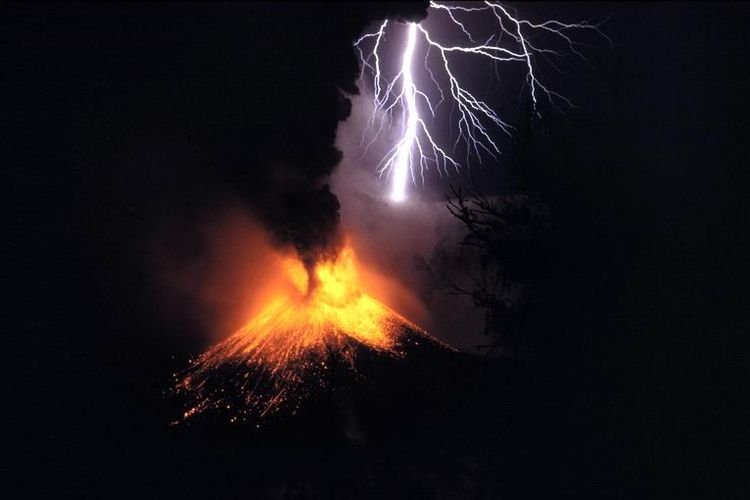Lightning arises when a volcano erupts, what phenomenon is that?

When volcanoes erupt, clouds that appear are often decorated with lightning flashes. This phenomenon has also occurred when Mount Merapi or Mount Anak Krakatau erupted.
Usually, lightning accompanied by thunderous thunder occurs during heavy rain. Then, what is the phenomenon of lightning when a volcano erupts?
This phenomenon is known as volcanic lightning. Launch National Geographic,
Volcanic lightning has very little to do with tectonic activity, and everything has to do with everyday physics.
Volcanic lightning does not form far away on Earth. This phenomenon is only formed in the ash column or hot clouds when the volcano erupts.
This eruption column is cylindrical consisting of volcanic ash particles released by several volcanoes when they erupt.
Volcanoes that do not have thick volcanic ash columns usually emit little volcanic lightning.
Volcanoes in Hawaii, for example, are more likely to spit out liquid incandescent lava than thick lumps of ash column. So that volcanoes on these islands rarely have volcanic lightning flashes when they erupt.
Small particles that form volcanic hot clouds that are compressed under the volcano.
However, the atmospheric air around the volcano is no more dense. This change in particle density contributes to the appearance of the volcanic lightning.
Because the particles are removed hard from the volcanic ash column, then these particles rub against each other.
Through these friction interactions ash particles gain and lose electrons, which then makes these particles electrically charged.
When an electrically charged ash particle rises to a less dense volcanic mass, the mass experiences charge separation.
Positive charged particles become increasingly separated from negatively charged particles.
When the charge separation becomes too large for the air to hold the flow of electricity, lightning tore off volcanic lumps to connect positively and negatively charged particles.
Volcanic lightning and static electricity
To find out how to work lightning or lightning on a volcano can be done alone.
Friction will create electrically charged particles, when you rub a balloon in your hair or socks rub on a carpet.
Then the negative particles will cover the balloon and this imbalance of electrons which is then called static electricity.
Finally, when in contact with something, another person or a metal doorknob that is not electrified, it will give rise to a static "shock".
This is the result of the lightning-fast discharge of electrons which also occurs in the process of the emergence of the volcanic lightning phenomenon when volcanoes erupt.
Thanks
Source
The image you posted is the primary source of value for your post or you have posted an image in a curated and/or artistic tag (photography, art, etc.) without attribution or source. By doing so you are claiming to be the sole content creator and that the image is original to yourself.
Plagiarism is the copying & pasting of others work without giving credit to the original author or artist. This includes manually reproducing the work of others, which violates their intellectual property rights.
Repeated plagiarism is considered fraud. Fraud is discouraged by the community and may result in the account being Blacklisted.
If you believe this comment is in error, please contact us in #appeals in Discord.